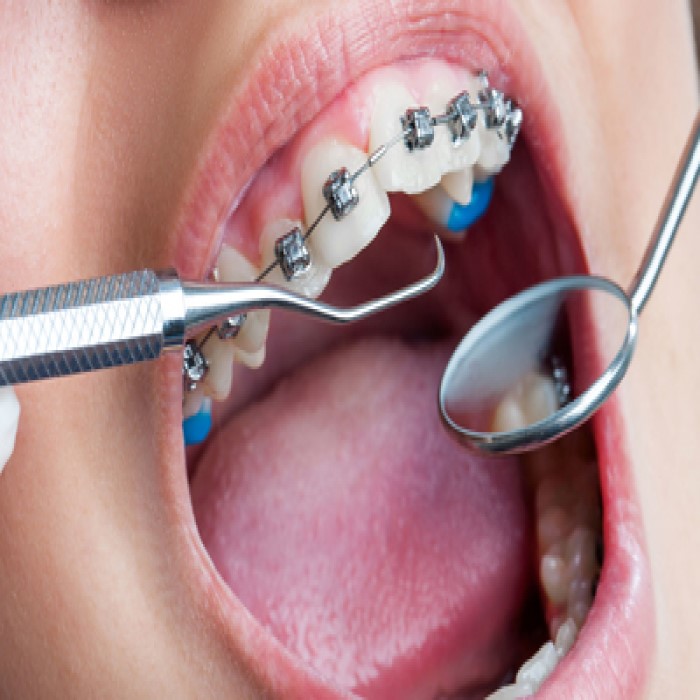Dental Filling
Protect Your Teeth from Further Decay with Natural-Looking Solutions

Dental Filling
Restore Tooth Strength and Function with Durable Fillings
Tooth decay (cavities) is one of the most common oral diseases in adults and children. Although not all cavity symptoms are obvious, decay is a bacterial infection that can spread into adjacent teeth or cause abscesses. The key is to intercept it early, remove the decay, and fill the hole or gap that’s left behind. By sealing off the opening with a minimally invasive white filling, you can keep your smile healthy for years to come.
Choosing the Best Dental Filling
The goal of basic restorative dental care is to a) repair the area of damage caused by decay and b) allow the tooth to function normally. By intercepting cavities with a small composite filling, we can stop the spread of decay into adjacent teeth or the tooth’s delicate nerve tissue.
If your decay is caught early enough, we may be able to provide treatment as simple as a drill-free filling

Frequently Asked Questions
fillings are used to fill cavities — essentially holes in your teeth — that result from tooth decay. The filling restores the tooth’s structure and full function. Depending on the material used, a filling can look just like the rest of your natural tooth.
Types of filling include:
- Composite fillings. Composite fillings are often preferred by patients today, especially for cavities near the front of the mouth, as the material looks just like natural teeth. The composite is made from powdered glass, quartz, silica, or other ceramic particles, added to a resin base.
- Silver amalgam fillings. Silver amalgam is highly durable and most suitable for filling cavities in the back of the mouth. Amalgam has been used by dentists for more than a century, though its use is dropping due to esthetic reasons, and because the amalgam’s stable alloy contains a tiny amount of mercury.
- Gold fillings. Gold is also used for fillings, though less commonly, due to the high cost and esthetic reasons.
- Glass ionomer fillings. Glass ionomer is made of acrylic and a specific type of glass material. Glass ionomer is most commonly used for fillings below the gum line and for fillings in young children. Glass ionomers release fluoride, which can help prevent tooth decay from recurring.
- Ceramic fillings. Ceramic fillings offer impressive durability and great aesthetics. Ceramic fillings are typically made of porcelain and are known to withstand stains and abrasion. This type of filling is ideal for larger cavities in visible areas of the mouth.
If you require a filling, your dentist will recommend the type of filling best suited to your situation.
Most cavities are detected in an early stage through x-rays, which are conducted on a regular basis at dental checkups. However, if you are experiencing the following symptoms, you may have a cavity:
- Visible pits or holes in your teeth
- New sensitivity when eating hot, cold, or sweet foods
- Toothaches that occur randomly
- New pain when biting or chewing
- Signs of gum disease
Cavities don’t always have visible symptoms. This is why it’s important to see a dentist every six months for teeth cleanings. Your dentist can detect early signs of cavities before they cause more damage to your tooth.
To receive a composite filling, the area around the tooth will first be numbed. Then the tooth is prepared by removing the decayed portion, leaving a small area that will be filled with the composite.
After a deep cleaning to remove debris, a special bonding agent is applied to the prepared area. A special curing light is then used to secure the bonding agent.
Your dentist then applies the composite material to the prepared area in layers, shaping the material to match the contours of your tooth’s surface. The curing light is used to set each layer of the composite, hardening it to withstand the forces of opposing teeth.
As a final step, your dentist will polish the composite filling to smoothen it and give it a similar sheen to the rest of your tooth.
Once completed, your tooth is free of decay and restored to its natural strength and appearance
Your filling can last for many years if you maintain proper brushing and flossing. Be sure to brush your teeth at least twice a day with fluoride toothpaste, and floss at least once a day or after every meal.
Not all cavities are painful. Other warning signs of tooth decay include:
- Discoloration
- Food catching in teeth
- Floss shredding in certain areas
- Sweet sensitivity
- Something feeling “off” when you chew

